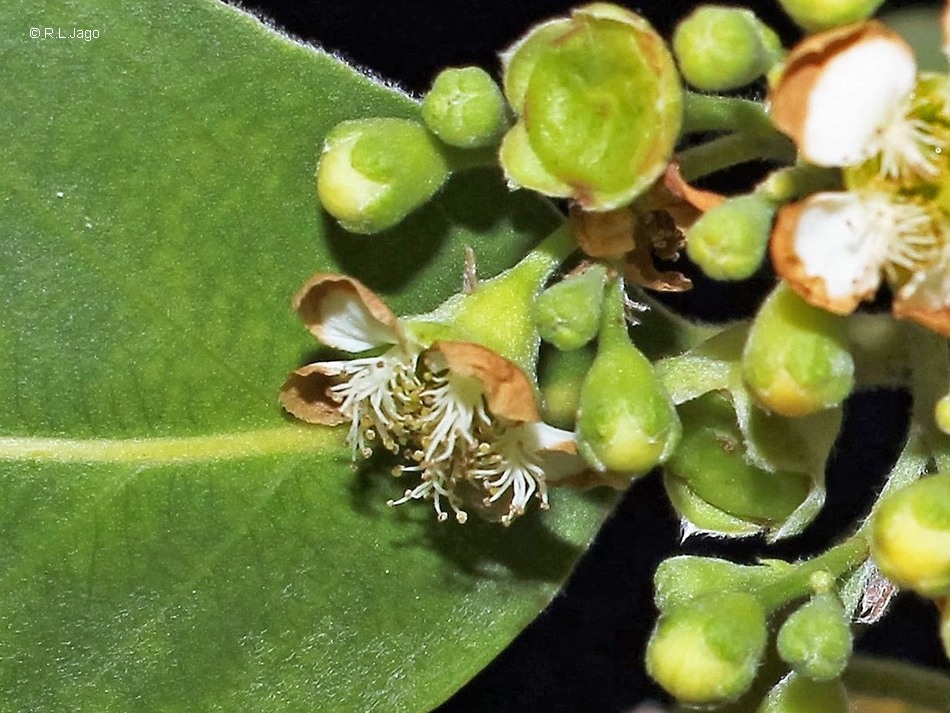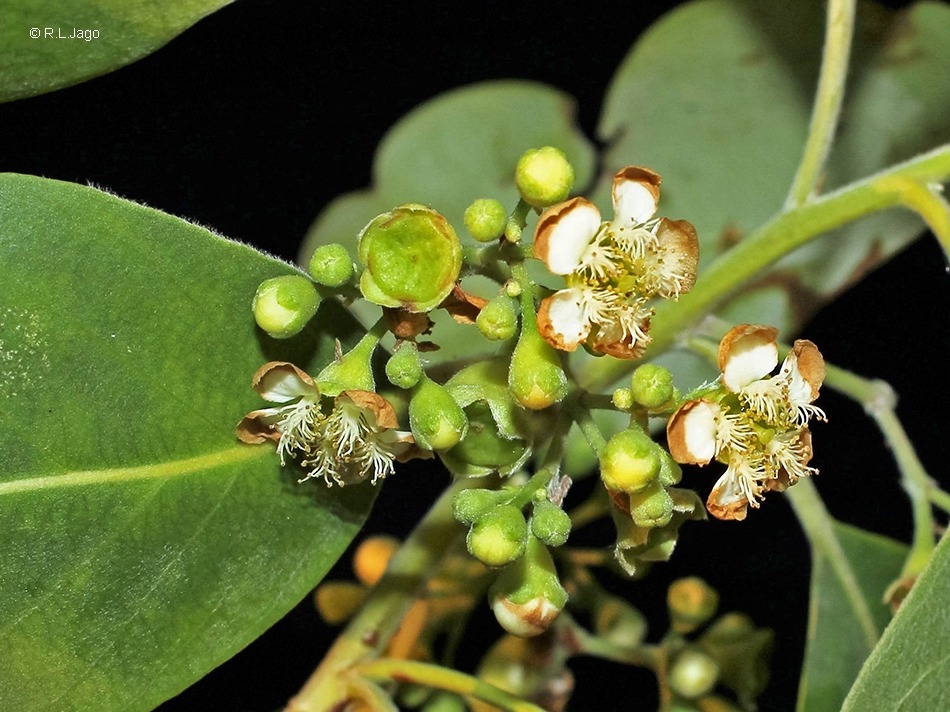Australian Tropical Rainforest Plants - Online edition
Lophostemon suaveolens (Sol. ex Gaertn.) Peter G.Wilson & J.T.Waterh.







Wilson, Peter G. & Waterhouse, J.T. (1982) Australian Journal of Botany 30: 425.
Swamp Mahogany; Apple; Mahogany, Swamp; Swamp Box; Swamp Turpentine; Mahogany, Paperbark; Box, Swamp; Paperbark Mahogany
Dead bark often soft and somewhat compressible.
Oil dots visible with a lens if not visible to the naked eye. Leaf blades about 5.5-14 x 2.5-4 cm. Young shoots and younger leaf bearing twigs clothed in white, erect hairs. Young leaves, when crushed, emit an odour like that of geraniums (Pelargonium spp.). Old leaves turn orange-red prior to falling.
Fruit about 6-8 mm diam., included in the calyx tube (hypanthium). Seeds linear, about 1.5-2 mm long.
Cotyledons elliptic to ovate, about 2-4 mm long. A few very small oil dots may sometimes be seen with a lens. At the tenth leaf stage: leaf blade elliptic, apex acute, upper surface glabrous or with a few hairs near the base on the midrib; oil dots very small, visible only with a lens; petiole, terminal bud and stem clothed in long white or pale hairs. Seed germination time 8 to 21 days.
Occurs in CYP, NEQ, CEQ and southwards as far as north-eastern New South Wales. Altitudinal range from sea level to 900 m. Grows in swampy open forest but also found on the margin of rain forest and gallery forest. Also occurs in New Guinea.
Formerly used as wharf piles particularly with the bark still attached. Swain (1928).





